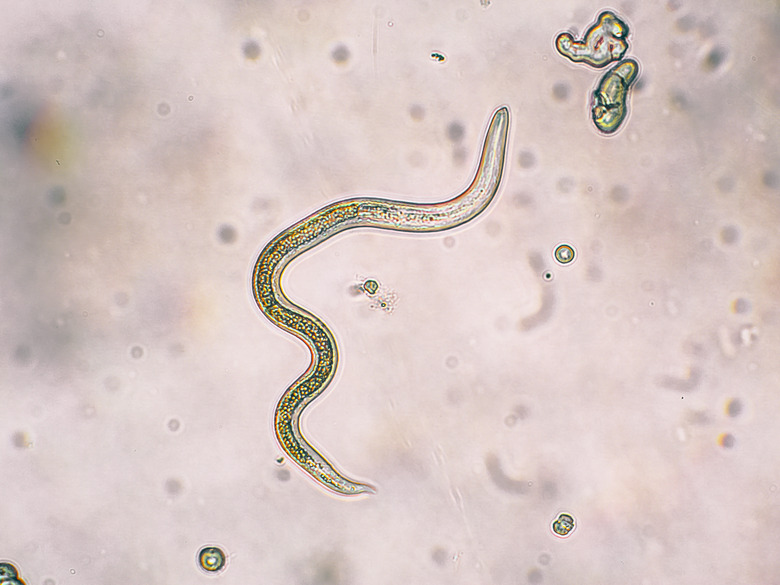Scientists Have Just Learned Why Devil Worms Can Live In "Hell"
They thrive in the underworld, surviving despite low oxygen and high methane levels and temperatures hovering around 37 degrees C (or 98.6 degrees F). That's what earned these critters the title of "devil worm" – which wouldn't otherwise suit the 0.5-millimeter nematodes.
American University molecular biologist John Bracht owns the only live devil worms in a U.S. lab, and even he admitted it to Science News: "There's nothing particularly menacing about them."
What Their Genes Tell Us
What Their Genes Tell Us
Only one devil worm has ever been captured from the wild, filtered out of water from an aquifer 1.3 kilometers beneath Earth's surface in a South African gold mine. That worm laid eight eggs, and thanks to its descendants – Bracht's worms – researchers understand a bit more about how animals might survive at such depths.
Devil worms are one of the deepest-living land animals known to science. According to a report from Bracht and his team, published Nov. 21 in Nature Communications, the worms survive their conditions thanks to extra copies of two genes responsible for heat shock and cell survival decisions.
In fact, devil worms possess about 112 copies of the gene that makes Hsp70 proteins. These proteins help cells deal with high levels of heat — the "hsp" in their name stands for "heat shock proteins" — and they work by repairing other proteins that have been damaged due to heat stress. The worms' closest known relative, another nematode, has only 35 copies of the Hsp70 gene – quite a leap from their deep-living cousins.
The Means for the Genes
The Means for the Genes
Genome biologist Mark Blaxter said that scientists must conduct more research to connect how the expansion of Hsp70 genes in devil worms might help the creatures live so far underground. And that's not the only unusual gene pattern found in devil worms: They also present about 63 copies of the AIG1 gene, which controls whether a cell lives or dies. Again, devil worms' closest nematode relative has only one copy of a similar gene.
When Bracht and his team conducted heat stress tests on the devil worms, their AIG1 genes didn't change in productivity. For this reason, Bracht concluded that the gene probably helps the worms cope with some other stressor in their environment.
Finding Similar Animals
Finding Similar Animals
Bracht and his research team reported in the December Journal of Molecular Evolution that the Pacific oyster also presents duplicate copies of the Hsp70 and AIG1 genes. When the tide ebbs and flows, it exposes oysters to extreme fluctuations in temperature, which may explain the creature's extra copies of these genes.
Bracht said that because two animals separated by such distance on the tree of life present such a similar genetic pattern it's likely that duplicating the Hsp70 and AIG1 genes generally helps animals adapt to extreme environments.
References
- Science News: Devil Worm Genes Hold Clues for How Some Animals Survive Extreme Heat
- Nature Communications: The Genome of a Subterrestrial Nematode Reveals Adaptations to Heat
- Journal of Molecular Evolution: Stress Adapted Mollusca and Nematoda Exhibit Convergently Expanded Hsp70 and AIG1 Gene Families
Cite This Article
MLA
Swanston, Brenna. "Scientists Have Just Learned Why Devil Worms Can Live In "Hell"" sciencing.com, https://www.sciencing.com/devil-worm-genome-13723693/. 16 December 2019.
APA
Swanston, Brenna. (2019, December 16). Scientists Have Just Learned Why Devil Worms Can Live In "Hell". sciencing.com. Retrieved from https://www.sciencing.com/devil-worm-genome-13723693/
Chicago
Swanston, Brenna. Scientists Have Just Learned Why Devil Worms Can Live In "Hell" last modified August 30, 2022. https://www.sciencing.com/devil-worm-genome-13723693/
